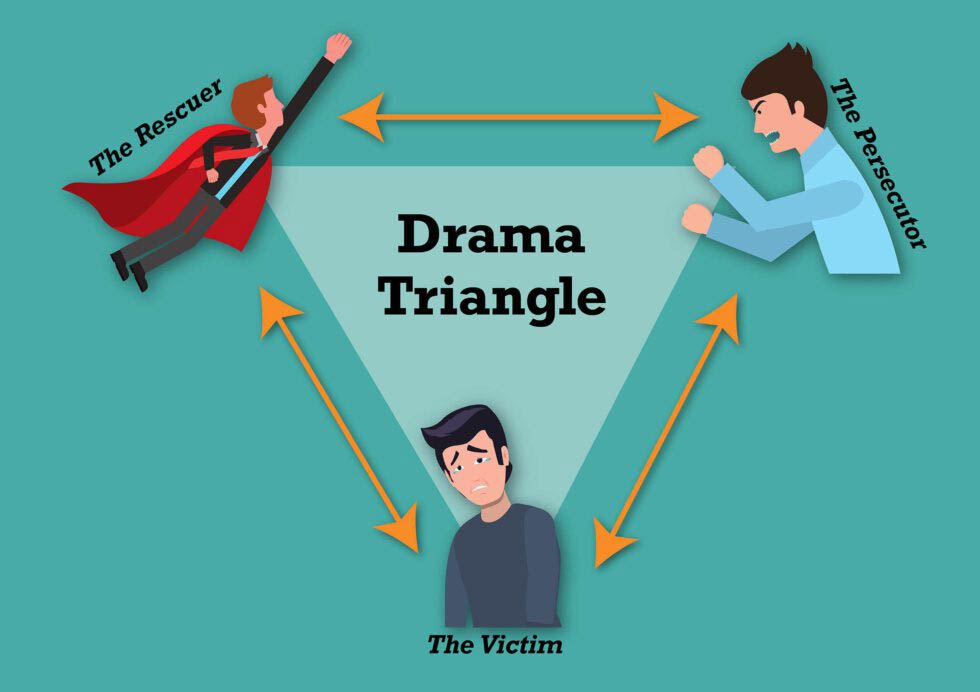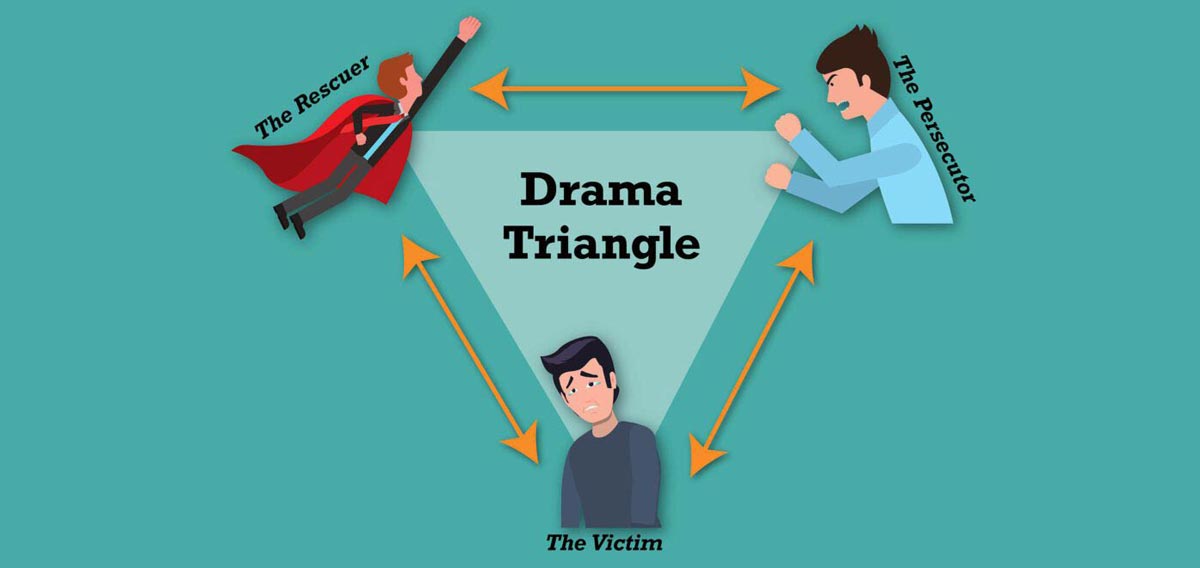Do you find yourself giving too much in relationships, feeling taken for granted, or stuck in the same arguments over and over again?
If so, you’re not alone—and there’s a reason these patterns repeat.
Many of us unknowingly fall into unhealthy relationship roles that keep us stuck. One of the most powerful tools I use with clients to understand these dynamics is Karpman’s Drama Triangle, a model that helps us see the patterns—and break free from them. When we pair this with an understanding of codependency, the picture becomes even clearer.

What Is the Drama Triangle?
Psychiatrist Stephen Karpman introduced the Drama Triangle in the 1960s to describe the roles people unconsciously take on during conflict:
1. The Victim
Not necessarily someone who is being harmed, but someone who feels powerless. This role is characterized by helplessness and self-pity:
“Why does this always happen to me?”
2. The Rescuer
This person jumps in to fix or save others, often without being asked. They may neglect their own needs while taking responsibility for someone else’s life. Melody Beattie, in her book Codependent No More, writes:
“We rescue. We fix other people’s problems. We do their work. We do things for them they can and should do for themselves. Then, we get mad at them for being irresponsible.”
3. The Persecutor
This role uses blame, criticism, or control. While the Persecutor may think they’re enforcing accountability, their approach tends to shame or intimidate others.
These roles are not static. One person might shift between all three in a single conversation. For example, a Rescuer who feels unappreciated might become a Persecutor (“After all I’ve done for you!”), while the original Victim may lash out and become the Persecutor themselves.
How Codependency Fuels the Triangle
Codependency is a pattern of focusing on others at the expense of your own needs. It often stems from early experiences where love or safety was conditional. Many people with codependent tendencies enter the Drama Triangle through the Rescuer role, believing they must caretake others to be loved or safe.
“Codependent behaviors are self-destructive,” Beattie explains. “We frequently react to people who are destroying themselves; we rescue, enable, or suffer; we try to control… and we focus our energies on the other person.”
Over time, these patterns can create resentment, burnout, and painful relationship dynamics that feel impossible to shift.
How to Step Out of the Triangle
The first step in healing is awareness. Once you recognize the roles you’re playing, you can begin to shift into healthier, more empowered ways of relating.
Author David Emerald offers a powerful alternative called The Empowerment Dynamic:
| Drama Triangle | Empowerment Role |
| Victim | Creator |
| Rescuer | Coach |
| Persecutor | Challenger |
- The Creator takes responsibility and seeks solutions.
- The Coach supports without fixing or enabling.
- The Challenger sets healthy boundaries and invites growth—without shaming.
These roles support mutual respect, autonomy, and emotional safety.
What Would Your Therapist Say?
A Therapeutic Invitation
If you’re recognizing yourself in these patterns, please know you’re not alone. These are often deeply ingrained coping strategies—survival patterns, not personal flaws.
“The only person you can now or ever change is yourself,” Beattie reminds us. “The only person that is your business to control is you.”
Therapy can help you:
- Identify the roles you fall into (and where they come from)
- Set healthy boundaries without guilt
- Heal the roots of codependency
- Build relationships based on honesty, mutual care, and respect
If you’re ready to break free from old dynamics and reclaim your energy and voice in relationships, I invite you to reach out.
Interested in working together?
Schedule a consultation or contact me here. I’d be honored to support your journey toward clarity, connection, and emotional freedom.
Resources:

